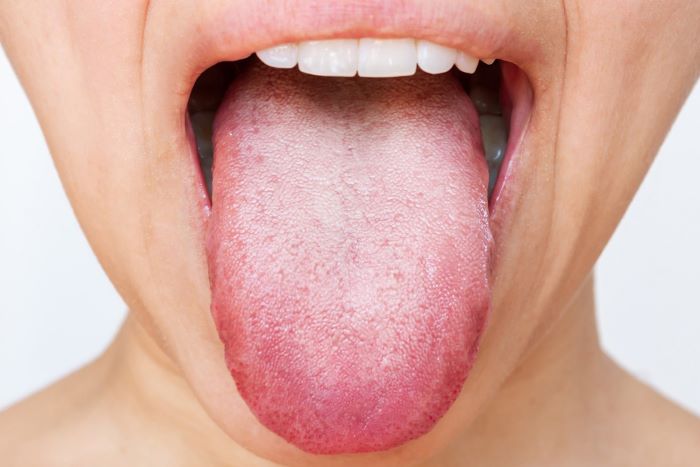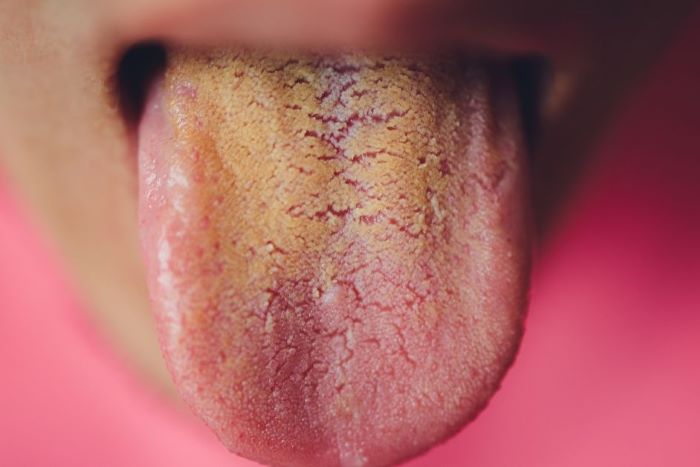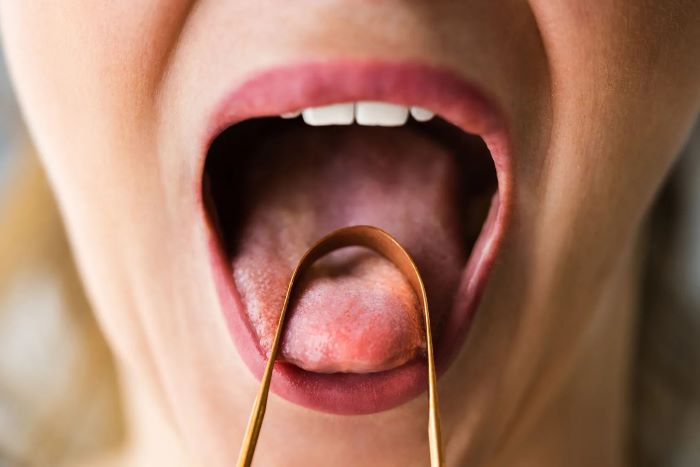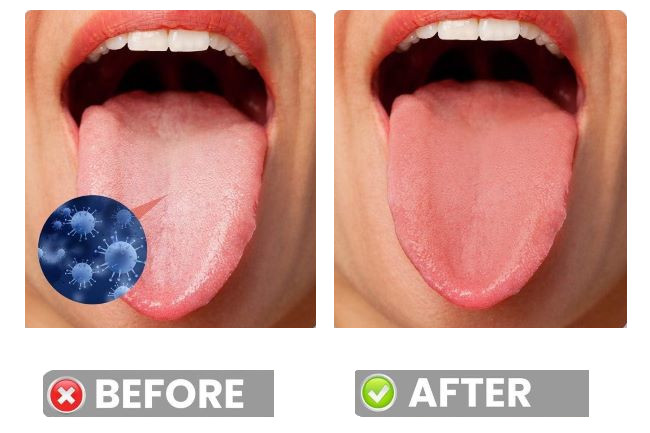
13 Jun 2024 - News
White Tongue? Yellow Tongue? Ayurveda Explains All
Have you ever checked your tongue and seen a white or yellow coating?
It might look worrying, but don’t worry—Ayurveda can help you understand what’s happening. In this blog post, we’ll look at how Ayurveda views tongue health, explain what a white or yellow tongue means, and give you practical tips to improve your health.
According to Ayurveda, our health is controlled by three energies called doshas: Vata, Pitta, and Kapha. These doshas affect our body, mind, and emotions. When they’re not balanced, health problems can occur. An Ayurvedic practitioner can determine your doshas and offer personalized advice to boost your health.
Why Tongue Health Matters
One way Ayurveda checks health is by looking at the tongue. The tongue acts like a mirror, showing what’s happening inside our bodies. By checking the tongue’s color, texture, and coating, an Ayurvedic practitioner can learn a lot about a person’s health. For example, a white or yellow tongue can point to different imbalances that need attention.
Understanding White Tongue in Ayurveda

A white coating on the tongue usually means there’s too much Kapha in the body. Kapha is linked to coldness and heaviness. When there’s too much Kapha, it can cause toxins, called ama, to build up. Ama is a sticky, white substance that can coat the tongue, showing that the digestive system isn’t working well.
To fix a white tongue, Ayurveda suggests balancing Kapha and improving digestion. This can involve changes in diet, herbal remedies, and lifestyle tweaks. For example, eating less dairy and processed foods, which increase Kapha, is recommended. Instead, try eating warm, light, and spicy foods to help digestion and reduce ama.
Understanding Yellow Tongue in Ayurveda

A yellow coating on the tongue usually points to an imbalance in the Pitta dosha. Pitta is linked to heat and intensity. When Pitta is out of balance, it can create too much heat in the body, showing up as a yellow coating on the tongue. This can be a sign of issues like acid reflux, inflammation, or infection.
BUY NOW Omni-Biotic Stress Release Probiotic —apply code Ayurvida15 for an exclusive discount.
To balance Pitta and fix a yellow tongue, Ayurveda suggests cooling and soothing practices. This includes eating foods that are bitter, sweet, and astringent, which help to calm Pitta. Examples include leafy greens, cucumbers, and melons. Also, avoiding spicy, oily, and fried foods can help reduce the excess heat in the body.
Practical Ayurvedic Remedy: Scraping

A simple and effective practice you can try at home is tongue scraping. This Ayurvedic technique helps remove toxins and improve oral hygiene. Here’s how to do it:
Get a Tongue Scraper: You can find tongue scrapers at most pharmacies or online. They’re usually made of stainless steel or copper.
Morning Routine: Use the tongue scraper first thing in the morning before brushing your teeth.
Scrape Your Tongue: Hold the scraper at both ends, place it at the back of your tongue, and gently pull it forward. Repeat this several times, rinsing the scraper after each pass.
Rinse Your Mouth: After scraping, rinse your mouth with water.
Adding tongue scraping to your daily routine can help remove ama and keep better oral and digestive health. It’s a simple yet powerful practice that aligns with Ayurvedic principles.

Lifestyle Tips for Tongue Health
Besides tongue scraping, Ayurveda offers various dietary and lifestyle tips to support tongue and overall health. Here are some key recommendations:
Hydration: Drink plenty of warm water throughout the day to help flush out toxins and keep your digestion running smoothly.
Balanced Diet: Eat a balanced diet that suits your dosha. For Kapha imbalances (white tongue), focus on warm, light foods. For Pitta imbalances (yellow tongue), choose cooling and soothing foods.
Mindful Eating: Eat your meals in a calm, relaxed environment, and take the time to chew your food thoroughly.
Sleep Well: Ensure you get enough sleep each night to support overall health and balance.
Your tongue can tell you a lot about your health, and Ayurveda offers valuable insights into understanding these signs. By paying attention to the color and coating of your tongue, you can identify potential imbalances in your body.
With simple practices like tongue scraping, dietary adjustments, and lifestyle changes, you can address these imbalances and enhance your overall well-being.
Discover your unique dosha profile with guidance from a certified Ayurvedic practitioner. Receive personalized recommendations to enhance your well-being.
Book your Ayurvedic consultation online or visit our San Diego clinic today.
Christianne Madrazo. Certified Ayurvedic Practitioner, graduate of Mount Madonna Institute, College of Ayurveda and student of Dr. Vasant Lad, one of the world’s foremost experts in Ayurveda.
AyurVida Wellness and Clinic is located in Mission Hills, San Diego, CA.
FOR ASSISTANCE TEXT 619-637-0201
If our article has nourished your soul, consider supporting this shared journey so it can blossom and reach others.
|
CONTACT US
PHONE:
619-291-6614
For immediate assistance:
TEXT 619-637-0201
ADDRESS:
1611 West Lewis San Diego CA 92103


